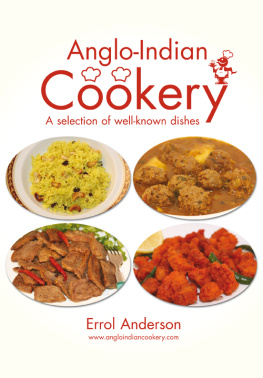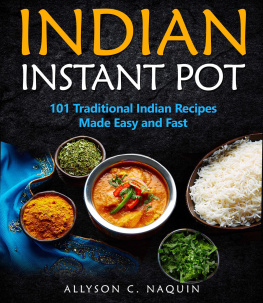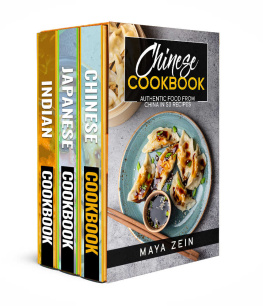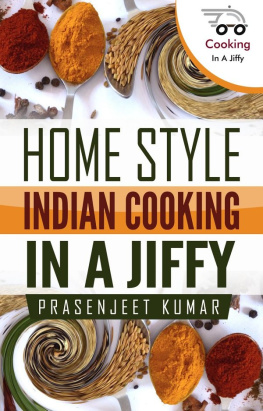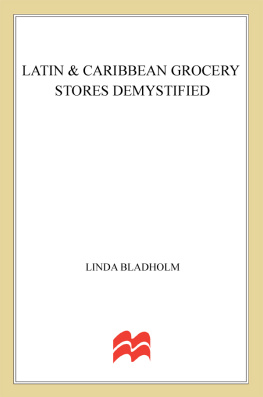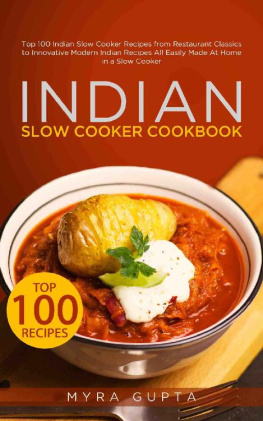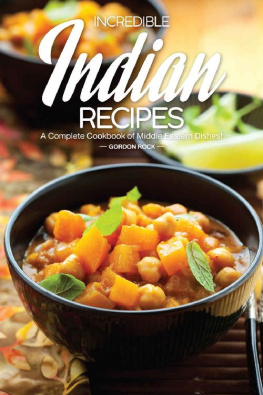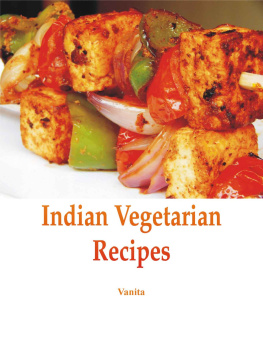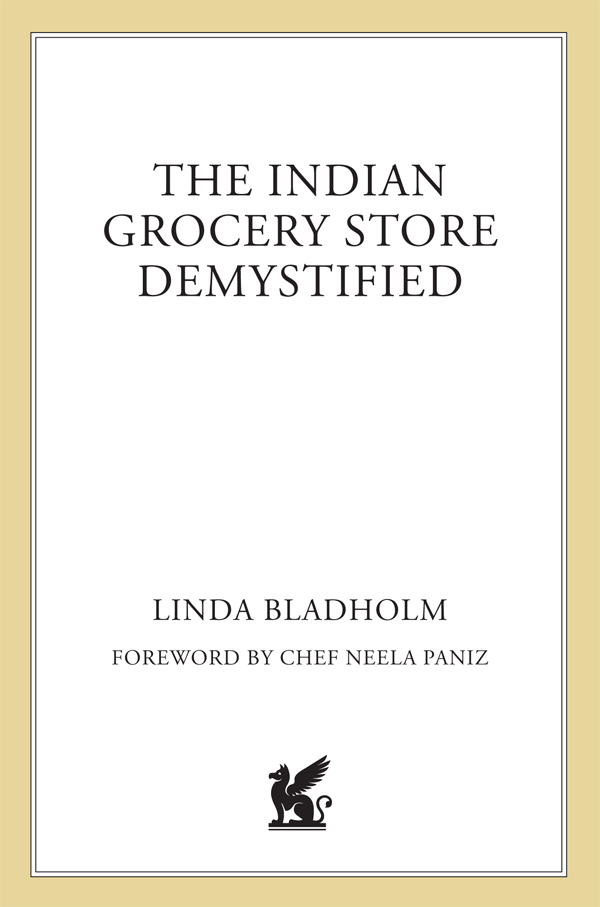Contents
Guide

The author and publisher have provided this e-book to you for your personal use only. You may not make this e-book publicly available in any way. Copyright infringement is against the law. If you believe the copy of this e-book you are reading infringes on the authors copyright, please notify the publisher at: us.macmillanusa.com/piracy.
This book is for my sister, Sharon Bladholm
The warm welcome that many Indian and Bangladeshi people gave me while I traveled in their countries contributed greatly to my understanding of a complex and fascinating land. Thanks for the experience and hospitality. Certain people who helped make this book possible deserve special mention: Leela and Dinu Patel of the Little Market in Ft. Lauderdale, Florida, who let me practically move into their grocery store as I worked on the book and for cheerfully answering my many questions. Joel Weltman for all his schlepping to and from the Little Market and for tasting my recipes (not to mention resolving computer crises). Shanon Duffey-Weltman for going along with it; and my ever-supportive parents, John and Ann Bladholm, and mother-in-law, Freda Weltman. A heartfelt thanks to both Thupten Rabgyla for his Hindi calligraphy, helpfulness, and prayers and to J. C. Harrison for his friendship.
More thanks go to all the patient Indian grocery-store wholesalers and owners in Chicago. They include Sam and Nirav Sanghavi of Nirav Foods; Sam, Javid, and Rakesh of Raja (Swad) Foods; Shawon Ahmed and Asif of the Fish Corner; Pradip Montu and Somabhai Patel of Jai Hind Grocery; T.V. Patel of Patel Brothers on Devon St.; Abid and Zahid of Indo Pak Foods; Kirti and Chef S. Thumma of Arya Bhavan Vegetarian Restaurant; and the beautiful Shilpa Mehta of Kirana Bazaar. In New York I want to thank Spice Corner, Kalustyans, Spice House, Pijush Chakraboty of the Bombay Bazaar; Arun and Anjani K. Sinha of Foods of India; and Abdul Patwary of Dowel Indian Grocery. In Jackson Heights, Queens, Im grateful to Nazrul of Meghna Grocery; the lovely Balwinder of Apna Cash & Carry; Patel Brothers; Subzi Mandi of Indo Pak Grocery; and Madhur of the Diwan Express sweet-and-snack shop. In Miami Id like to thank Mohammed Han of Dhaka Bazaar; Raju and Nisha Bombaywalah of the Bombay Super Bazaar in North Miami Beach; Farida Ladha and Mirza of the Indian Grocery on Douglas Road; and the charming Ishma of Continental Groceries.
Thanks to Dawn Reshen-Doty and Neil Reshen for continuing to believe in my talent and Editor Richard F.X. OConnor for being right and thanks to the Renaissance Media staff, including Lisa Lenthall, Jesus Arellano, Amanda Tan, Geoff Bock, Ian Culver, Kimbria Hays, Miye Kim, Kathryn Mills, Arthur Morey, and publisher Bill Hartley. Special thanks to Neela Paniz; Marc and Eve Zimetbaum; Dema Shahavi at Veggie Times; Linda Gassenhiemer; Vijay Varky from Syracuse; Asako Severn; Vanita Kumar of Little India Publications; Chef Rimi Nahar of Nirvana; Ken Lee of Lotus Foods; Marc Novak; Barbara Ezell; Roberto Requena; Paul Wenzel; and Pear, Oz, Sonny, Mousie, Ed, Noko; the turtles; and most of all Frog, who I love with all my heart.
When I came to the United States in 1968 I brought several spices and food items with me for my aunt. At that time there was only one market in Los Angeles that carried some Indian groceries, and it was a Middle Eastern market. In the past thirty odd years or so (as Linda Bladholm will tell you) that number has grown to over 9,000 markets throughout the country.
As a restaurateur, cookbook author ( The Bombay Cafe Cookbook, Ten Speed Press), and, most importantly, a home cook, one of my favorite pastimes is to browse through different ethnic markets. With the growth of Indian markets and my lack of knowledge about many of the items sold therein, I now find myself taking many trips to Little India in Artesia, a suburb of Los Angeles. I conduct tours in conjunction with my cooking classes to help the participants recognize and avail themselves of the groceries needed to prepare an Indian meal. We explore the grocery stores with their large stock of lentils, flours, rice, spices, and even the fresh vegetables grown specifically for the Indian consumer. We stop at beauty salons for a little henna painting, play dress-up at sari boutiques and jewelry stores, sample the culture at music and video shops, and last but not least, indulge in some great street snacks.
In the past few years, Indias culture and food have become very popular in the Western world. More and more people are frequenting Indian restaurants. Its spices are being fused into other cuisines by master chefs; celebrities are buying pashmina shawls or donning traditional cosmetic enhancements such as bindis and mehndi, and fashion gurus are designing clothes in the Indian style. All these factors have helped contribute to the rise of neighborhood Indian grocery stores and boutiques. Today, Indian spices, basmati rice, and even some pre-mixed curry pastes and tandoori marinades are showing up in the aisles of large supermarkets, luring consumers to try them.
Shopping in ethnic stores can be both exciting and daunting when items are hard to identify. Often the storeowners themselves are unable to explain certain products in relation to the Western world. Let The Indian Grocery Store Demystified guide you through the shelves of the little neighborhood Indian market or entice you to visit the Little Indias in your city. Open your senses to the wonderful aromas of the spices and try the strange but alluring vegetables. Ask the boutique owner to drape you in one of the flowing saris and complement them with some of the ethnic jewels and glass bangles, or even paste a bindi onto your forehead. Listen to Indian classical and film music and, most importantly, try some of the freshly prepared snacks. You will feel as though you have just visited an exotic, faraway land.
Neela Paniz, restaurateur
The Bombay Caf
Los Angeles, California
Indian cuisine is a rich mosaic of exotic spices, fragrant herbs, and earthy grains. It is unique in its melding of both fiery-hot and delicately subtle flavors. The reason I wrote this book is to give anyone who wants to try their hand at Indian cooking an accessible guide to identifying and using a variety of these ingredients.
While the ingredients are readily available in over 9,000 Indian grocery stores in America, many potential cooks give up, neither knowing what to make of the mysterious items that crowd shelves nor understanding how to use them. If you are one of these people, I have designed this book to meet your needs by explaining what you will smell, see, and find. I will explain what it will look like, taste like, and be used for. I tasted the irresistible flavors of this food while traveling through India and Bangladesh, where I discovered there are as many cuisines to sample as there are regions to explore. I crunched bhel puri from newspaper cones sold by street vendors, savored onion fritters and spicy doughnuts in roadside restaurants called dhabas, and sipped tea with sweets bought from teawallahs at rail stations. Ive eaten mounds of rice and vegetable curries with my fingers in South Indian banana-leaf curry shops and Ive had multicourse, moghul-style meals in elegant Bombay restaurants. In Bangladesh I ate fish and drank moht, a fermented rice wine, in a mud hut in the hill-tribe village of Rangamati. I tried spicy grilled pigeon at a Chittagong market stall. I learned to distinguish all the ingredients on countless trips to Indian groceries in America with the help of many patient store owners. This book is intended as a guide to understanding both the basic and unusual ingredients found in the typical Indian market. The purpose of this book is to help you, the reader, use your Indian cookbooks and recipes.


